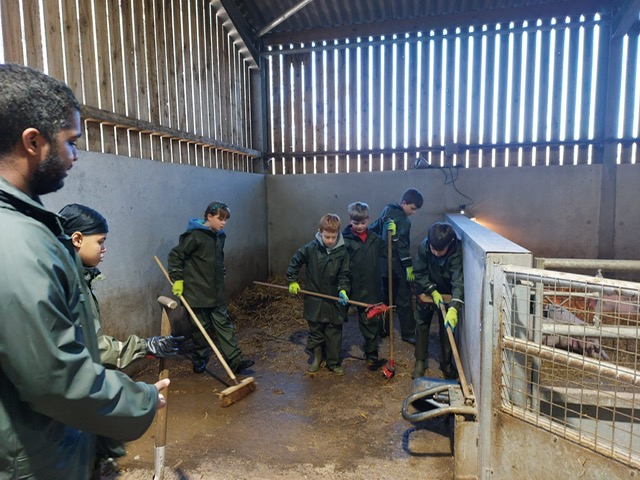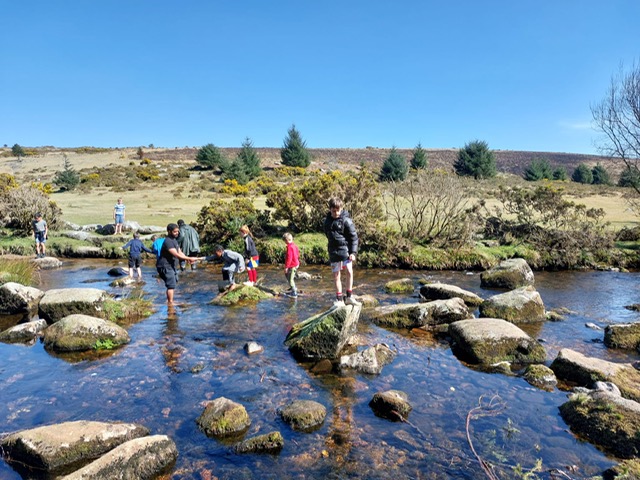The lanes were flaming gold with gorse, the hedgerows snow white with blackthorn. The skies were clear and blue. At the bridge over the Walla Brook, sheep were grazing the down on Riddon ridge, while a pair of buzzards, cruised above, circling, watchful, telescope eyes on the undergrowth below. We slowly crossed the humpback bridge over the East Dart glancing down at what was left of the old clapper, before turning into Bellever forest.
The river was inviting. No need to wander along the trail and cross the bridge on foot, when you can jump from rock to rock or wade at knee depth in the sparkling waters. Away from stream we made a path to where the forest turns steeply uphill, and followed it, some scampering as if a challenge, some trudging as if a burden.
No ponies to be seen along the ridge. We stopped at pockets of peat, and talked about ancient forests, hearth rights, and fuel for the fire. From Riddon Ridge we had 360 views. Sky larks were busy among the low growing vegetation, with songs that spoke of wonder and life, and songs that spoke of danger. Invisible in the sky with their shrill song, or there – do you see it? On that rock, just standing? Its stripy back, its crested head, waiting, watching, then gone.
We followed the contours down to find the Walla brook, and its stepping stones. The stream was quiet, slowly flowing, with strings of green weed sliding in its path.
Up to where the Two Moors way crosses the hillside, past the old signpost, and up the slow back of Corndon, and crossing its left shoulder and as the hill turned downwards, we could see Shallowford spread out among its bright green fields. That was a welcome sight for those who kept asking where are we going and when do we get there.
Finding a track through the gorse, and in a few minutes, we had reached the road, and stood by the old concrete slab, and asked the same question we had asked for fifty years: what it might have been for, and teasing out the answer about the farmers and milk and milk churns and milk lorries and former times.
This is a walk we have always done. Bellever to Shallowford. Countless groups have trudged it, rain and shine, frost or glorious like this Spring sunshine.

A day rich in experiences for the senses, but if you had asked the children what they thought of it, I suspect they would have said the same thing, as these children replied when I asked them at the end of the walk. Why did the walk have to be so long? But, oh, wasn’t the river such fun.
Nevertheless, they did it. They saw and touched and heard, and somehow it will have been parked in the memory bank of their mind. On another occasion they will say, oh, there’s that bird, what’s it called. Or walk over to the yellow gorse and pick its flower. Or perhaps see something and ask what is this.
The thing is it takes time. It took time for all of us. It still takes time for some of us.
And so we continue at East Shallowford to stimulate, to show, to offer experience, and who knows which will succeed, whether this or that; and meanwhile it is another day at the farm, and I can hear the sound of children togging up, and further down the yard the call of pigs anticipating feeding time.
Another day.
Another day for all of us to see, to hear, to feel, to learn, to sow and wait, to sow and reap.

